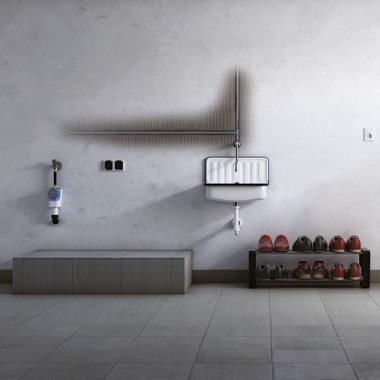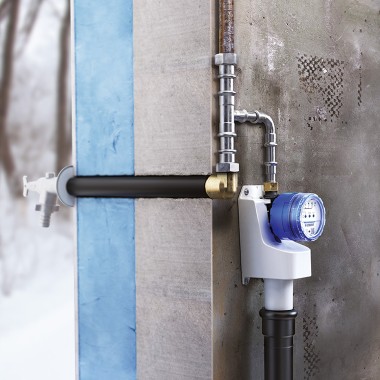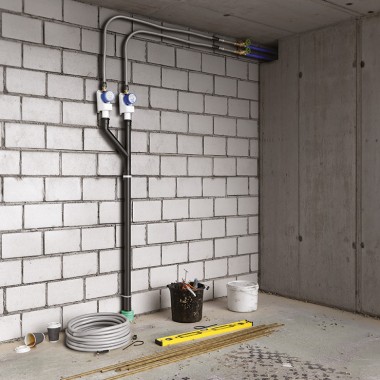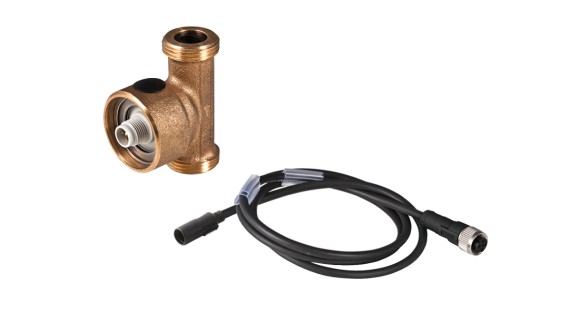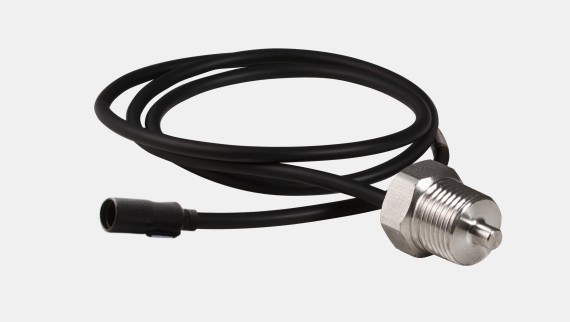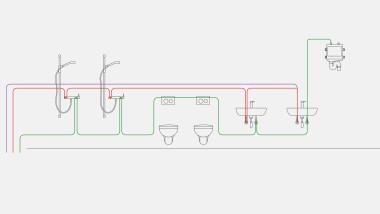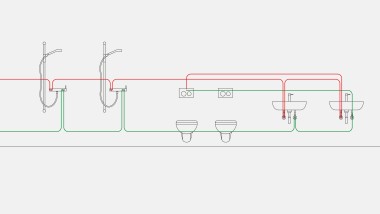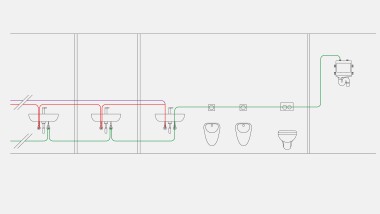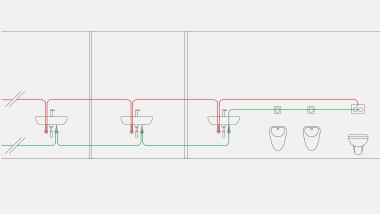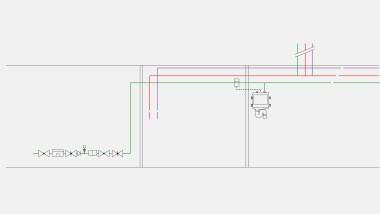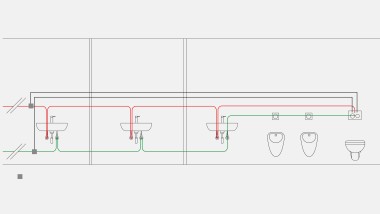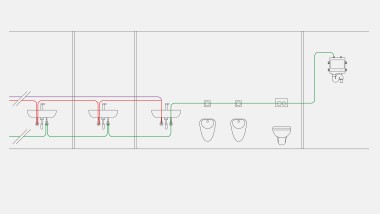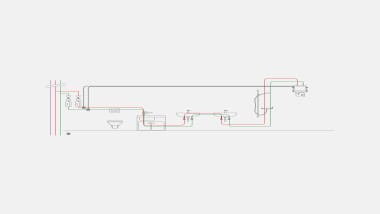Drinking water hygiene with Geberit Safely prevent stagnation
An underestimated source of danger
Legionella bacteria live in water and can cause legionnaires' disease. According to a study conducted by the Robert Koch Institute (German only), the disease causes about as many deaths in Germany as are caused by traffic accidents (German only).
Infection happens through the inhalation of droplets in the shower, for example. Pseudomonas and other germs also create sources of danger.
Hot or cold and always on the move
It is true that drinking water is never completely germ-free, but normally the concentration of germs is harmless. Health risks only arise when the germs are able to multiply. Stagnant water and water temperatures between 25 °C and 50 °C can encourage bacterial growth. In practice, the risk is likely to occur in empty properties, in rooms that are only used intermittently or in cases where dead-end pipes are not in use.
Hygiene problems caused by excessive proliferation of germs can be reliably avoided through:
- correct planning, design and commissioning
- correct operation
- avoidance of stagnation
- avoidance of unfavourable temperatures between 25 °C and 50 °C
Biofilms in drinking water
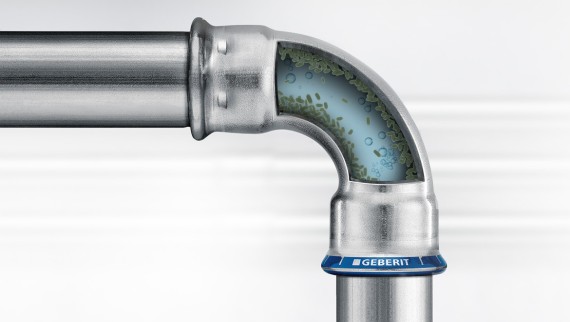
Biofilms form anywhere that water circulates, including drinking water systems. Normally, they don’t pose any problems and don’t affect the quality of drinking water. Health risks only arise when the germs are able to multiply. Stagnant water and water temperatures between 25 °C and 50 °C can encourage bacterial growth. In practice, the risk is likely to occur in empty properties, in rooms that are only used intermittently as well as in dead-end pipes. Hygiene problems caused by excessive proliferation of germs can be reliably avoided through:
- correct planning, design and commissioning
- correct operation
- preventing stagnation
- preventing unfavourable temperatures between 25 °C and 50 °C
Underestimated risk: legionella and pseudomonas
Anyone inhaling legionella can be infected. This can happen anywhere that polluted water droplets enter the air as aerosols; for instance, under the shower or on taps.
Legionnaires’ disease can trigger pneumonia. However, it is often not identified as the cause of illness. For that reason, the estimated number of unreported cases is high and the significance of the disease is underestimated. The same is true of pseudomonas, which can trigger gangrene and develop resistance to antibiotics.
Problem areas for drinking water hygiene
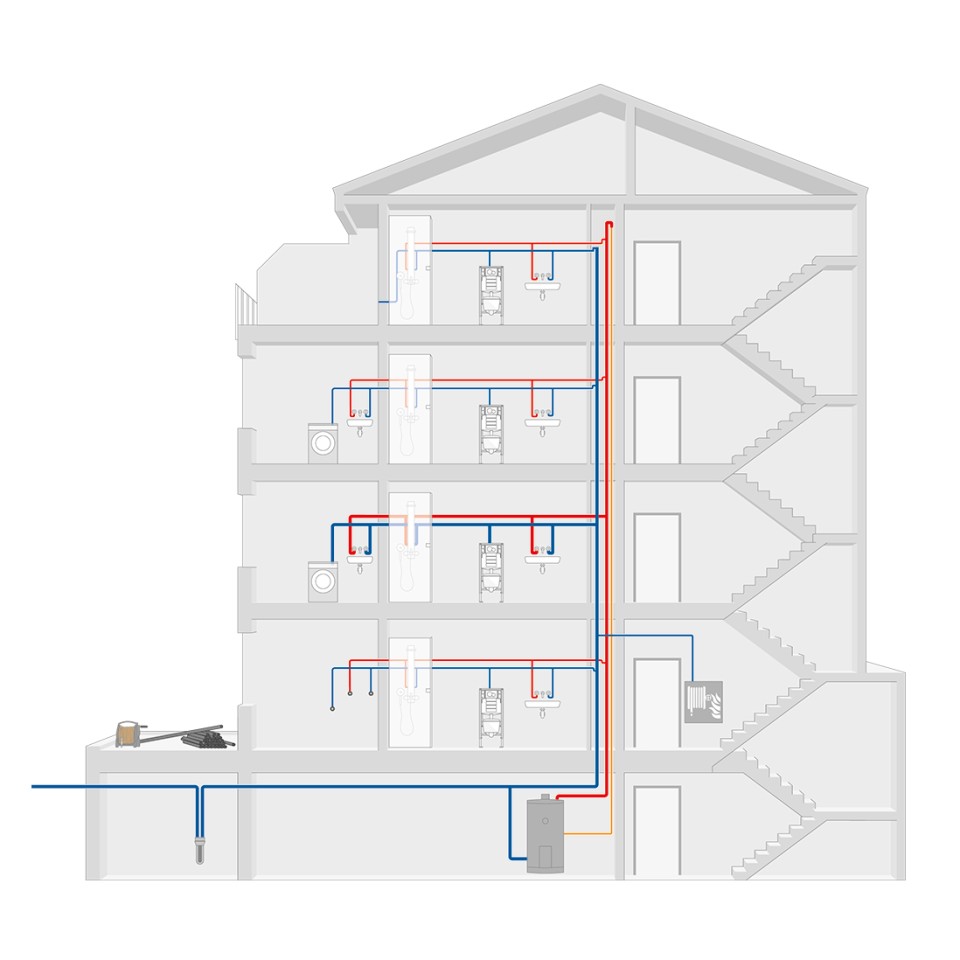
The solution for new and existing buildings
The solution for new buildings
When drinking water safety is at great risk
Existing buildings
Geberit products for drinking water hygiene
Geberit sanitary flush Rapid
Flexible solution
- Compact dimensions
- Battery enables mains-independent operation
- Trap easy to clean
- Operation possible without trap, e.g. in the case of drainage into the cistern
- Flush intervals can be set easily and intuitively
- Easy installation, easy removal, can be reused multiple times
Flushing programmes for every operating situation
Interval flush mode
Time flush mode
Temperature flush mode
Volume flush mode
Consumption flush mode
New Geberit sanitary flush Rapid
When you encounter serious hygiene issues resulting from stagnant drinking water, you need rapid action. With the new Geberit sanitary flush Rapid, the problem can be resolved quickly and easily. It is easy to use and provides all basic functions for regular water replacement. This compact and economical hygiene solution is battery-operated and can be put into action immediately, in exactly those areas that are at risk of stagnation. This makes it an ideal interim solution if, for example, major renovation measures cannot be implemented immediately.
Standards and laws
Guaranteeing drinking water quality in domestic installations is the subject of various ordinances and standards. At a European level, Directive 98/83/EC governs the quality of water for human consumption. Sanitary engineers, plumbers and operators are safe from a legal perspective if they observe directives like this and comply with country-specific regulations.
